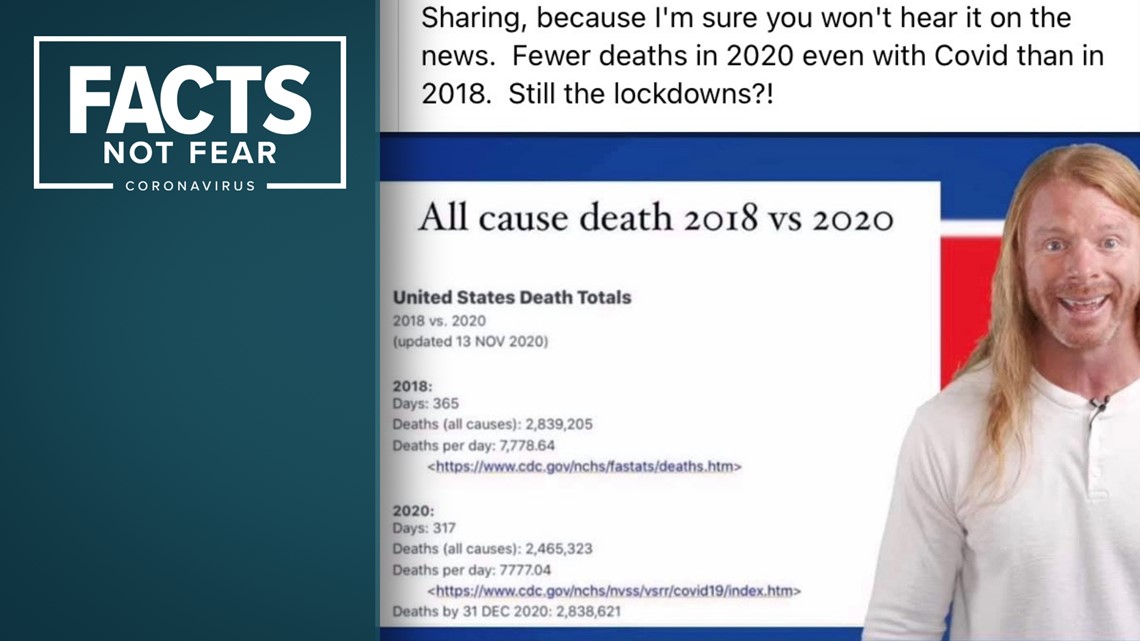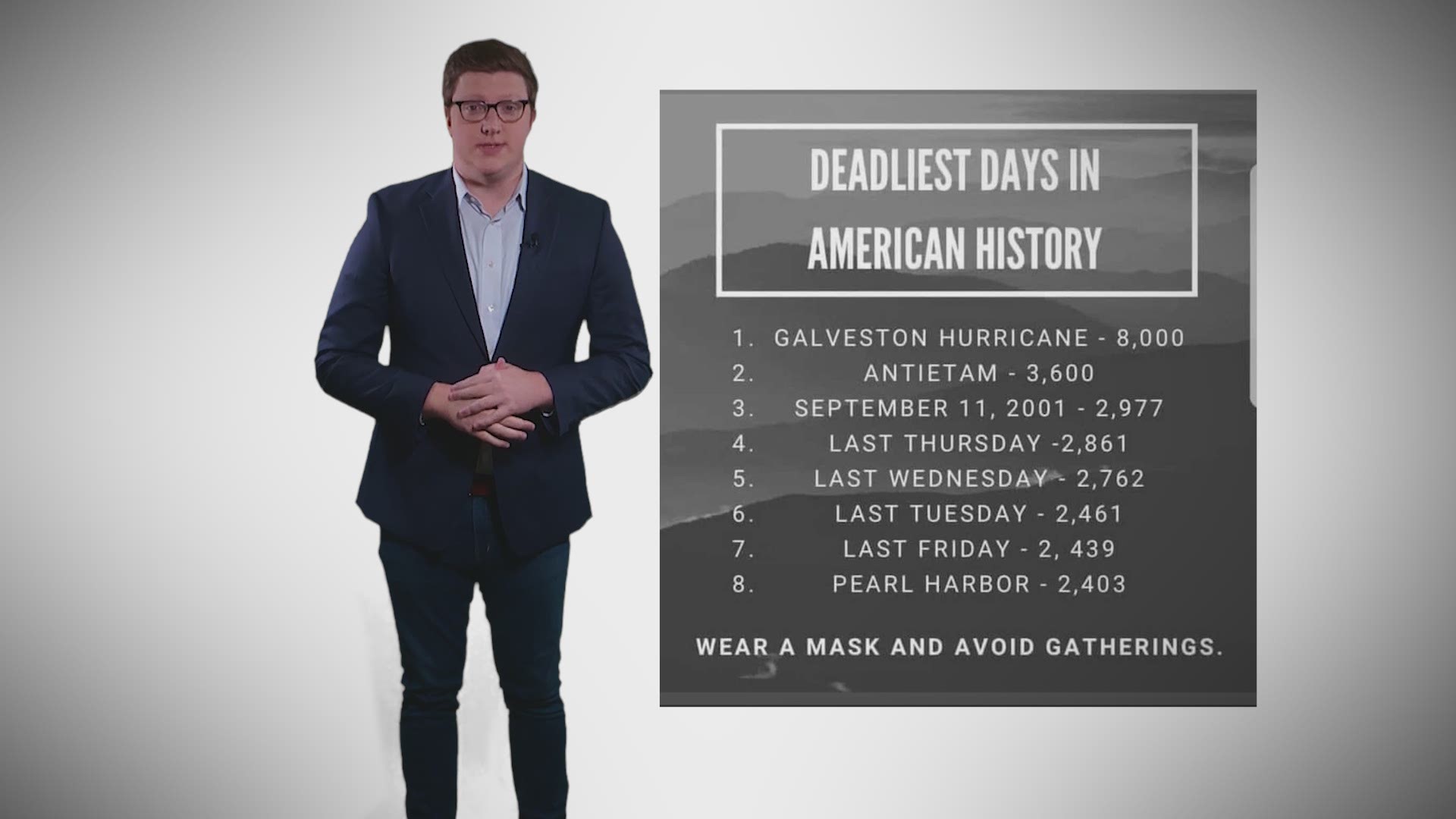WASHINGTON — The Centers for Disease Control provides troves of data to the public every day on everything from populations, to diseases, to mortality. The numbers they report require context, which is why all their data reports have some kind of documentation explaining what that data does and does not show.
When people don't read that documentation, but still use the data to come to mathematical conclusions, misinformation is spread. One missed line can create a world of confusion, and that confused point of view can spread fast on social media.
A Facebook post spreading around claims to have done the math to predict how many Americans will have died by the end of 2020 based on numbers from the CDC. The Verify team talked to the CDC's Chief of Mortality Statistics to break down where they went wrong.


QUESTION:
Can you predict that 2020 total deaths will be less than 2018?
ANSWER:
No. Not only were the numbers used in the Facebook post inaccurate, but the math done was rudimentary. Experts use extremely complex models to predict mortality rates, and are still often wrong.
SOURCE:
Dr. Robert Anderson, Chief of the Mortality Statistics Branch for the National Center of Health Statistics at the CDC
PROCESS:
The Facebook post in question credits it's data to the CDC, so we brought this directly to the person who runs mortality statistics at the CDC, Dr. Robert Anderson.
"There's some serious sort of mathematical issues with their with the algorithm that they use to calculate that," Anderson says. "One of the problems that we've seen with this Facebook post, and many others that have done similar things, is that they're using the total deaths by week from the COVID-19 page. And the total number of deaths for that page starts in February."
The website cited in the post for 2020 numbers, linked here through the Internet archive Wayback Machine to the date November 13, states clearly above the data that it covers "Week ending 2/1/2020 to 11/7/2020."
"They're leaving out about roughly 240,000 deaths occurring in January, Anderson explains. "If you add in the 240,000 deaths that occurred in January, you see a substantially higher number of deaths per day."
This is where the math equation falls apart. This person excluded January deaths, but included the number of days that were in January. An accurate 'deaths per day' statistic would need to include the 240,000-some January deaths, and would be closer to 8,500.
But, Dr. Anderson says, even if they had calculated deaths per day correctly, simply extrapolating that rate out through the end of the year would not give you an accurate prediction of total 2020 deaths.
"The issue is that they're making the assumption that what they calculated as the number of deaths per day is the number of deaths per day." Dr. Anderson says past years show us deaths are higher in the winter.
"As you move through November and into December, the number of deaths rises, it always does. In a normal year it rises. Even if we took COVID-19 out of the equation, it's going to rise, and therefore, they're going to end up under estimating the number of daily deaths," he continued.
An added level of context necessary when discussing mortality in 2020 is incomplete data. The finalized mortality statistics report for the year 2019 will not be released until December 22, Dr. Anderson told us. It takes a long time to finalize data in a normal year, let alone during a pandemic.
Dr. Anderson says data for the early weeks in 2020 are "reasonably complete," but numbers for the most recent weeks are still being updated as preliminary and secondary reports come in from states and hospitals. You can read more about the two levels of COVID-19 death data provided to the CDC here.
Another issue, as Dr. Anderson points out, is the simplicity of the mathematical equation used to predict human mortality. Estimating the amount of deaths in a given time period requires more than a three step math problem in a normal year, and especially during a pandemic.


"Those are the sort of things that are very, very difficult to predict, even when you know there's a pandemic, you're not exactly sure how it's gonna play out." Dr. Anderson says the processes behind mortality are complex. "There are lots of different reasons why people die, and it is complicated."
He says that doesn't stop some experts, but even with great technology and great minds, it's still just a prediction.
"There are people who are doing it, there multiple institutions that are running models to predict it, and a lot of them have been wrong."
So we can Verify that no, this Facebook post does not prove that there were more deaths in 2018 than there will be in 2020. That conclusion is based on inaccurate data and uses rudimentary math to predict something that requires complex modeling done by health experts and statisticians.


